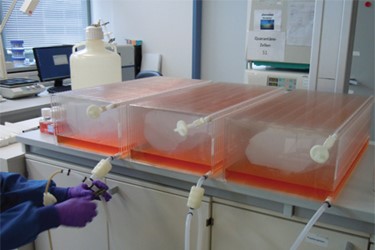Master Cell Bank Production Of Liver Carcinoma Cells

Introduction
Cells are the starting material of high-content screening, production of recombinant proteins, and cell-based assays. In order to ensure a steady supply of cells for these processes, cells are often banked in high numbers and resurrected when needed. This not only ensures that cells are available in sufficient numbers, but also reduces variability that might result from producing small batches of cells that tend to be unstable across generations.
Production of high numbers for cells requires a considerable investments in capital, energy, and planning. Many factors contribute to the unit productivity of cells, such as the liquid reagents, cell culture vessels, and of course the cells themselves. Even the best system can be limited by the constraints of the materials at hand. Productivity can often only be gained by adding more personnel, or buying more space.
Here, we report our initial experience with Thermo Scientific™ Nunc™ High Density Cell Factory™ systems, which enable large-scale production of adherent cells. The multilayer design of the devices allowed us to use existing protocols and reagents (scaled for size) while switching from using six Cell Factory 10-layer systems (total of 60 layers) to three High Density Cell Factory 52-layer systems (total of 156 layers). Using these devices, we were able to significantly improve the total cell productivity (cells per batch per technician) of a liver carcinoma cell line without adding personnel or building space.
Get unlimited access to:
Enter your credentials below to log in. Not yet a member of Bioprocess Online? Subscribe today.
